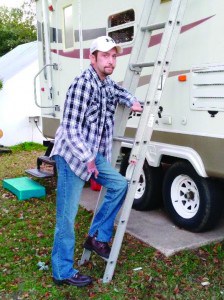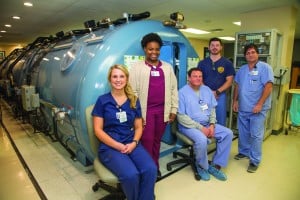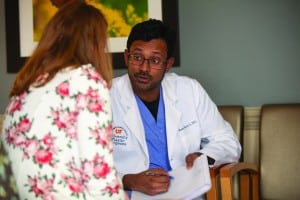He’s a DJ every other Saturday night. His house is under renovation and he can’t wait to move in. He’s in discussions about taking over the pro shop at the local golf course. He and his girlfriend love to spend time together and with their friends.
Life is good now. But less than two years ago, Richard Prince’s life was almost tragically cut short.

Richie Prince spent over 300 days at the Firefighters Burn Center after a bonfire accident, but today he’s enjoying life and continuing to heal thanks to Regional One Health doctors.
It took the capable hands and warm hearts of Regional One Health’s doctors, nurses and staff in the Firefighters Burn Center – including 40 surgeries over 10 months – for Richard to have a chance to live the life he now leads.
His family calls him Richie. Over the 300 or so consecutive days he was hospitalized at Regional One Health, his mom, Shirley, became known to everyone – from Burn Center Medical Director Dr. William Hickerson to every nurse – as “mom.”
“I felt like I was with family when I was at Regional One Health with Richie,” says Shirley. “They let me cry when I needed to, and I usually really needed to.”
At the age of 39, Richard was severely burned by a backyard bonfire when a canister typically containing diesel fuel was mistakenly replaced with gasoline. Tending to the bonfire resulted in an explosion that almost killed Richie.
He was burned from his hairline to his feet. Seventy percent of his body was severely burned, with only the top of his head and parts of the back of his body escaping the fire.
Emergency responders in the Missouri bootheel town of Kennett, where Shirley lives and where Richie was entertaining friends, knew the area hospitals couldn’t help him. He was airlifted to Regional One Health’s Firefighters Burn Center.
He spent about half of those 10 months on life support. Shirley left her job and lived on Regional One Health’s 2nd floor, where there’s a lounge with recliners for family members who stay overnight with their loved ones.
Shirley recalls that Richie would have died more than a few times during those critical ICU months, had it not been for the calm response and skilled attention of several doctors and nurses who saved Richie at every twist and turn his medical condition took.

Regional One Health’s Wound Care Center offers the region’s only Hyperbaric Oxygen Therapy chamber to treat severe burns and other wounds.
“I knew that the ventilator was keeping him alive,” says Shirley. “One time when I was at the bed with him, his ventilator blew out and air hit my face. I started crying and Dr. Hickerson calmly walked over, told the staff what he needed for Richie and told another person to take me to the waiting room. He told me to go and he’d be there in 10 minutes.”
Ten minutes later, Dr. Hickerson joined her in the waiting room and said, “I told you I’d be here!” Richie was saved.
It was still hard on both Richie and Shirley when he was finally able to leave the ICU, but at least now they knew he was going to make it. As the nurses began to move him around so he could see daylight and slowly begin to bring motion back to his body, Richie’s personality also returned to life.
“He’s the clown of our family. He keeps people laughing,” says Shirley. “He would joke with the doctors and staff even when rehab was hard and hurt.”
Recently, back in Missouri, Richie was being fitted for a leg brace to stabilize a leg that still needs to heal from the accident. “He asked the doctor for a tree trimmer brace instead of a regular one,” says Shirley. “He was a tree trimmer before and thought it would be funny to ask.”
Amidst the laughter, Shirley says that Richie knows how much has been done for him by both the medical team and his family and how much he went through.
He’s still going through the process of healing and adapting to life now. During the lifesaving process at Regional One Health, nine of Richie’s fingers and thumbs and one of his legs had to be amputated. He has a prosthetic, but he can’t yet walk on the other foot. He intends to walk again. He intends to live a very full life.

Dr. Ram Velamuri’s passion for helping severely burned patients comes alive in the team-based environment at Regional One Health.
“I’m so proud of him,” says Shirley. “He gets out there and does everything he wants to do. He’s doing just great.”
Dr. Ram Velamuri was a key member of Richie’s medical team. For Dr. Velamuri, teamwork among several different medical specialists was the key to caring for Richie – as well as all patients in the Regional One Health Firefighters Burn Center.
“The team approach with our plastic surgeons, critical care doctors, nurses and our rehab, nutrition, and pharmacy teams made this modern-day miracle possible,” says Dr. Velamuri.
In Richie’s case, the medical team worked together to use a care technique that is unique to just a few burn centers in the country – with Regional One Health being one of them. This technique is a fluid-removal therapy that when started early, reduces toxicity as the body fights to recover and helps increase the odds of survival.
The Firefighters Burn Center has been able to fund advanced training and specialized equipment that have created its world-class service thanks to generous donors.

